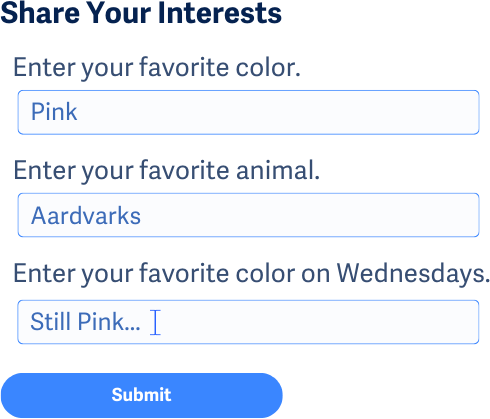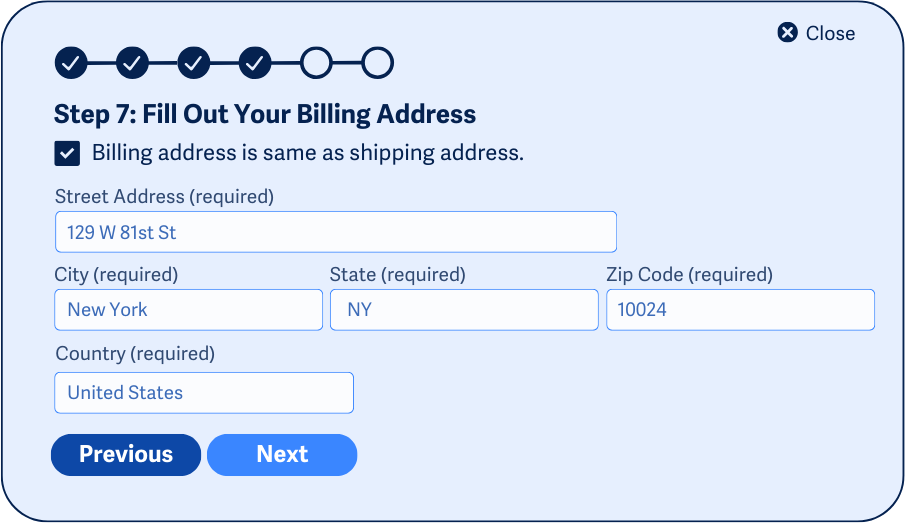3.3.7 Redundant Entry
Don’t ask for the same information twice in the same process. Provide pre-filled fields or selection options if the information was already given.
What is it?
A web form should not ask users to enter the same information more than once in a single session. This is especially important for multi-step forms and processes. For example, when completing a checkout form, users should not have to separately enter their billing and shipping information if they are the same.
The aim of this success criteria is to make the process easier by avoiding redundant data entry, which helps users feel less stressed and reduces the chance of mistakes.

Why does it matter?
Requiring users to remember and re-enter information can cause stress and mistakes, especially for people with cognitive disabilities. Everyone experiences mental fatigue while completing multi-step processes, and adding memory tasks makes the process even more difficult.
Nobody enjoys re-entering the same information over and over, and people with limited mobility can experience additional challenges with that task. Reducing the need for repeated entries makes the experience easier and smoother for everyone.
Who is affected?
People with cognitive disabilities may struggle to remember information they’ve already entered, which can cause stress and mistakes.
People with limited mobility also benefit from fewer inputs, as it may be harder for them to enter information using assistive technology.
How to implement 3.3.7
About This Section
This section offers a simplified explanation and examples to help you get started. For complete guidance, always refer to the official WCAG documentation.
Most of the time, redundant inputs should be avoided, but there are some exceptions, such as:
- Games where repeating inputs is part of the challenge, such as memory quizzes
- Confirming passwords or email addresses for security or validation reasons
- When previous entries expire and need to be updated
Avoid Duplicate Input
The easiest way to implement 3.3.7 is to remove any fields that ask for the same information more than once. Check your form make sure every input is necessary, and get rid of any extra or duplicate fields.
Populate Data From Previous Input
Instead of making users remember what they entered before, automatically fill in the new input with the previous data.
For fields that appear more than once, make sure there’s a way to populate them easily. This can be done in a number of ways:
- Automatically filling the field and letting the user edit if needed
- Providing a checkbox to let the user choose to fill the field with previous information
- Asking the user to confirm if the previous information is still correct. If not, showing new input fields

Conclusion
By avoiding repeated data entry and helping users remember information from previous steps, we can reduce stress and mistakes. Using techniques to eliminate duplicate inputs and automatically fill in data can improve the usability and accessibility of web forms and processes.

